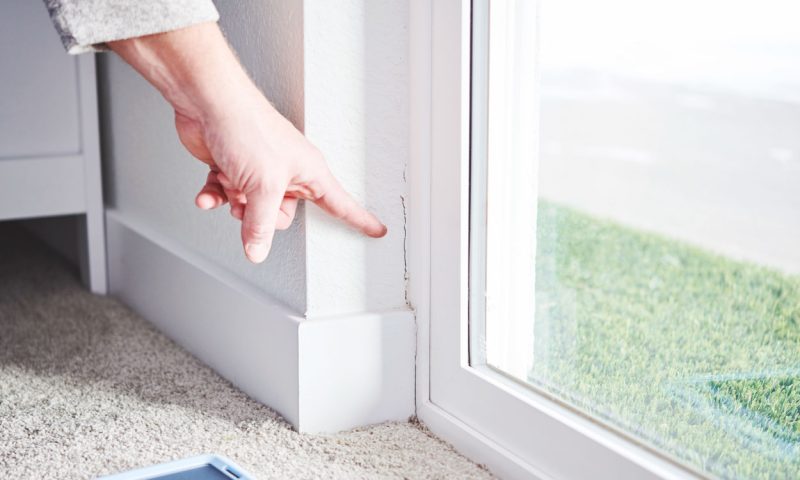What To Know Before Replacing Your Garage Roof

Some garage roofs are ignored until visible issues arise. Small leaks, loose panels or crumbling materials may seem minor, but they often point to deeper problems. Once those signs appear, delaying repairs could lead to higher costs, especially if water damage reaches the contents or structure.
Many homeowners hesitate before making upgrades because they’re unsure what replacement involves. Knowing what to expect early on makes planning, budgeting, and choosing the right team to handle the job easier.

When a Full Replacement Makes More Sense
Short-term repairs can only go so far. If there are large patches of damage, widespread leaks, or signs of sagging, patching sections might not be enough. In these cases, a complete upgrade becomes the more practical solution.
Covering up damage without tackling the cause risks more serious structural issues later. Water can reach timber frames, insulation, or electrics, and you don’t want this to creep along unnoticed.
Those weighing up the cost and process of a garage roof replacement may benefit from working with experienced professionals who understand the regulations and health risks that sometimes come with older materials like asbestos. Replacing it safely, legally, and efficiently matters.
Common Garage Roofing Issues to Spot Early
Small signs often point to larger roofing problems. Peeling or cracked felt, rusty fasteners, or tiles that no longer sit flat suggest the surface is no longer watertight.
Pooling water after rainfall can be another warning sign. Flat or poorly angled surfaces may fail to drain correctly, adding weight and increasing the chance of rot.
Staining or damp patches inside the garage often means water has already penetrated. That may go unnoticed if the garage is used less or for storage, which is why regular checks help.
Even garage roofs made from more durable materials like corrugated sheets or fibre cement can develop faults over time. Panels shift, seals perish, and damage builds slowly. Catching it early is always cheaper.
Choosing the Right Materials
Every home has different needs. Garage size, budget, local weather, and how the garage is used will all influence your decision. There’s no single material that suits every job.
Felt roofing remains a cost-effective option, especially for smaller structures, but often has a shorter lifespan. Corrugated metal is long-lasting and handles poor weather well, though it may be noisy during storms unless insulated properly.
Fibre cement provides strength and is popular where asbestos removal has taken place. It offers a similar look but without the risks. GRP fibreglass is another alternative that delivers durability with fewer joins, which means fewer weak spots.
Weight, installation time, and cost all vary. Reputable installers will discuss what’s most appropriate based on your garage’s condition and what matters to you: insulation, lifespan, or low maintenance.
Do You Need Permission?
Homeowners often assume that replacing a garage roof is straightforward. That’s true in many cases, but not always. Planning permission isn’t usually required unless the structure’s height or footprint changes. However, that doesn’t mean you can skip regulation checks entirely.
If your roof uses asbestos, there are strict rules regarding its removal and disposal. Contractors must follow official guidance to stay compliant, and skips can’t be used for certain types of waste.
Changes that affect drainage, fire performance or boundary walls might also trigger building control involvement. It’s important to ask these questions upfront so your project doesn’t face unexpected delays.
Even if your work falls under permitted development, checking first saves hassle. Local authorities often publish clear planning advice on their websites. A five-minute check now could prevent a fine or the cost of redoing work later.
Finding the Right Person for the Job
Choosing the cheapest quote often turns out to be the most expensive decision. Poor workmanship, delays, and hidden costs can easily undo initial savings.
Experienced roofers who specialise in garage roofing should have a clear track record. Look for installers who are transparent about costs, methods, and materials. Reviews on independent platforms can give a better idea of their reliability.
Ask for written estimates that include everything: removal, materials, labour, scaffolding, and disposal. Contractors should also carry insurance in case anything goes wrong on-site.
Don’t forget to check whether they’ll manage permissions or waste compliance if needed. That saves you from dealing with councils or worrying about skip placement. Good tradespeople welcome questions. If someone brushes off safety, regulations or guarantees, look elsewhere.
Avoiding Budget Pitfalls
Costs vary depending on size, structure, and access. Flat garage roofs tend to be cheaper to replace than pitched ones. Still, some factors can push prices up even with a simple build.
Asbestos removal, disposal charges, and temporary roofing during poor weather are often extra. Some jobs require scaffolding, which adds both time and cost.
Set aside a small buffer for anything unexpected. Rotten joists, hidden leaks, or problems with insulation may only become apparent once the roof is removed. Avoid making decisions based on price alone. Opting for better materials or an experienced team may cost more initially, but it often means fewer repairs in the future.
Maintaining Your Garage Roof After Replacement
New roofs last longer with regular maintenance. Keeping it clear of moss, leaves and pooled water helps prevent early damage. Moss traps moisture, which can shorten material lifespan.
Check seals, fasteners, and joints every few months. These areas tend to be the first to fail. Early signs of wear don’t always mean major repairs are needed. Reapplying a sealant or replacing a loose panel could be all it takes.
During colder months, look for frost damage or blocked drainage. A few simple steps once or twice a year can delay the need for larger repairs.
If your garage is used for more than storage, like a gym, office, or workshop, insulation matters, too. Regular inspections ensure the space stays dry and functional year-round.
Take Action Before Issues Escalate
A neglected garage roof often leads to much bigger problems down the line. What starts as a small leak can grow into structural damage, ruined possessions, and increased bills.
Fixing damage early makes the job easier and cheaper. Don’t wait until materials have failed. Speak to professionals, understand what your garage needs, and check what permissions may apply before starting.
Taking control of repairs now avoids stress later. With the right materials and expert support, your garage roof can be safer, stronger, and built to last.
The post What To Know Before Replacing Your Garage Roof appeared first on UK Home Improvement.







